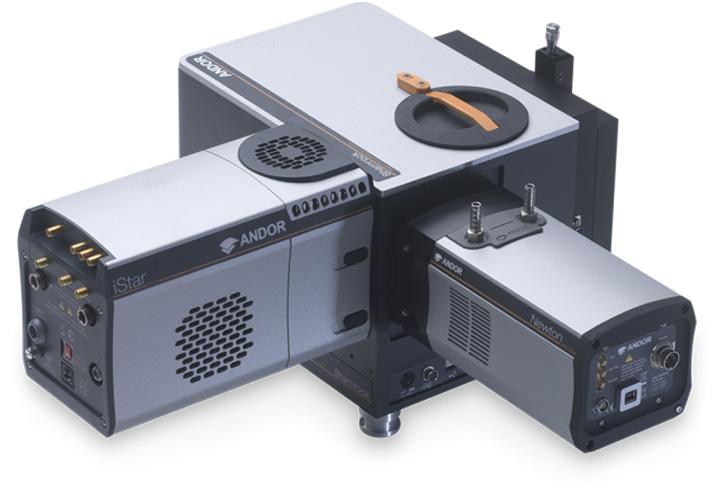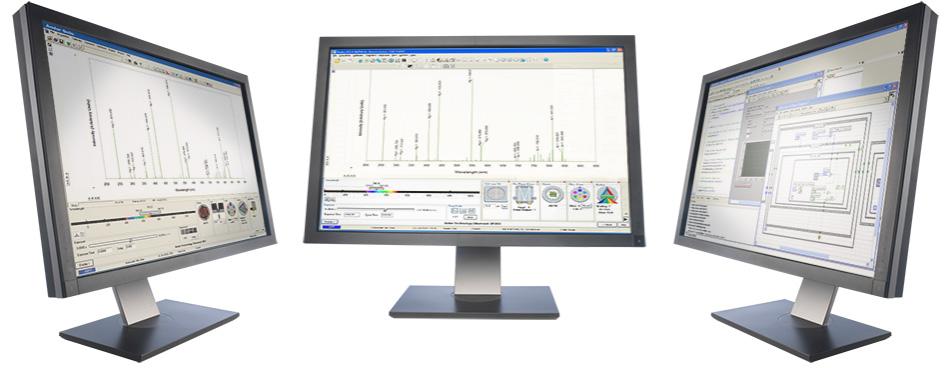Resources
 Part of the Oxford Instruments Group
Part of the Oxford Instruments Group
Expand
Collapse
Andor’s modular spectroscopy platforms are designed to tackle analytical challenges from UV to SWIR, from macro- to nano-scale, with fluxes down to single photon and time-resolution down to nanosecond. Our range can be seamlessly configured to provide optimised detection solutions for many applications including material science, biomedical, chemical reactions and plasma studies. Relevant techniques include Raman, Luminescence, Absorption, LIBS, and many more.
Kymera and Shamrock Czerny-Turner Spectrometer portfolio provides highly versatile platforms for everyday basic or advanced Research, with ease-of use in mind and ease-of-configurability to support evolving detection needs. Mechelle platform provides a unique combination of high resolution and bandpass performance for LIBS and Plasma Science.

Andor’s range of CCD, EMCCD, ICCD, sCMOS and InGaAs detectors provide tailored solutions for demanding applications and challenging photon fluxes from UV to SWIR, including platforms with time resolution capabilities down to nanosecond regime and spectral rates up to multi-kHz regime.


Solis Acquisition Software - A 32-bit and fully 64-bit enabled application for Windows (Vista, 7 and 8) offering rich functionality for data acquisition and processing, as well as Andor cameras, spectrograph and motorized accessories simultaneous control.
Request Pricing Find out moreSoftware Development Kit - A SDK that allows you to control the Andor range of Shamrock spectrographs from your own application. Compatible as 32 bit libraries for Windows (Vista, 7 and 8). Compatible with C/C++, C#, VB6 and LabVIEW and Linux
Request Pricing Find out moreµ-Manager for Micro-spectroscopy - Integrated modular micro-spectroscopy setup control popular with the Life Science community. All market leading motorized microscope and accessories seamlessly controlled and maintained. Integrated sequence builder & macro interfaces for complex experiments building.
Find out more Download plug-inThe collection and processing of light from the sample to the spectroscopy detector can take many forms depending on signal emission characteristics and geometry of the experiment. Andor provides a large range of coupling interfaces to microscopes, cage systems, fibre-optic based or free-space configurations to best address bespoke setup requirements and challenges.
Andor’s range of tools for spectroscopy are designed to assist Researchers with identifying the detection configuration(s) that best matches a given spectroscopy setup requirements from the detector (signal-to-noise ratio comparator) to the spectrograph (spectral resolution and bandpass calculator).
The Learning Centre hosts a wide range of case studies, technical articles and webinars on various applications and spectroscopy techniques. Here are some key articles for further reading: